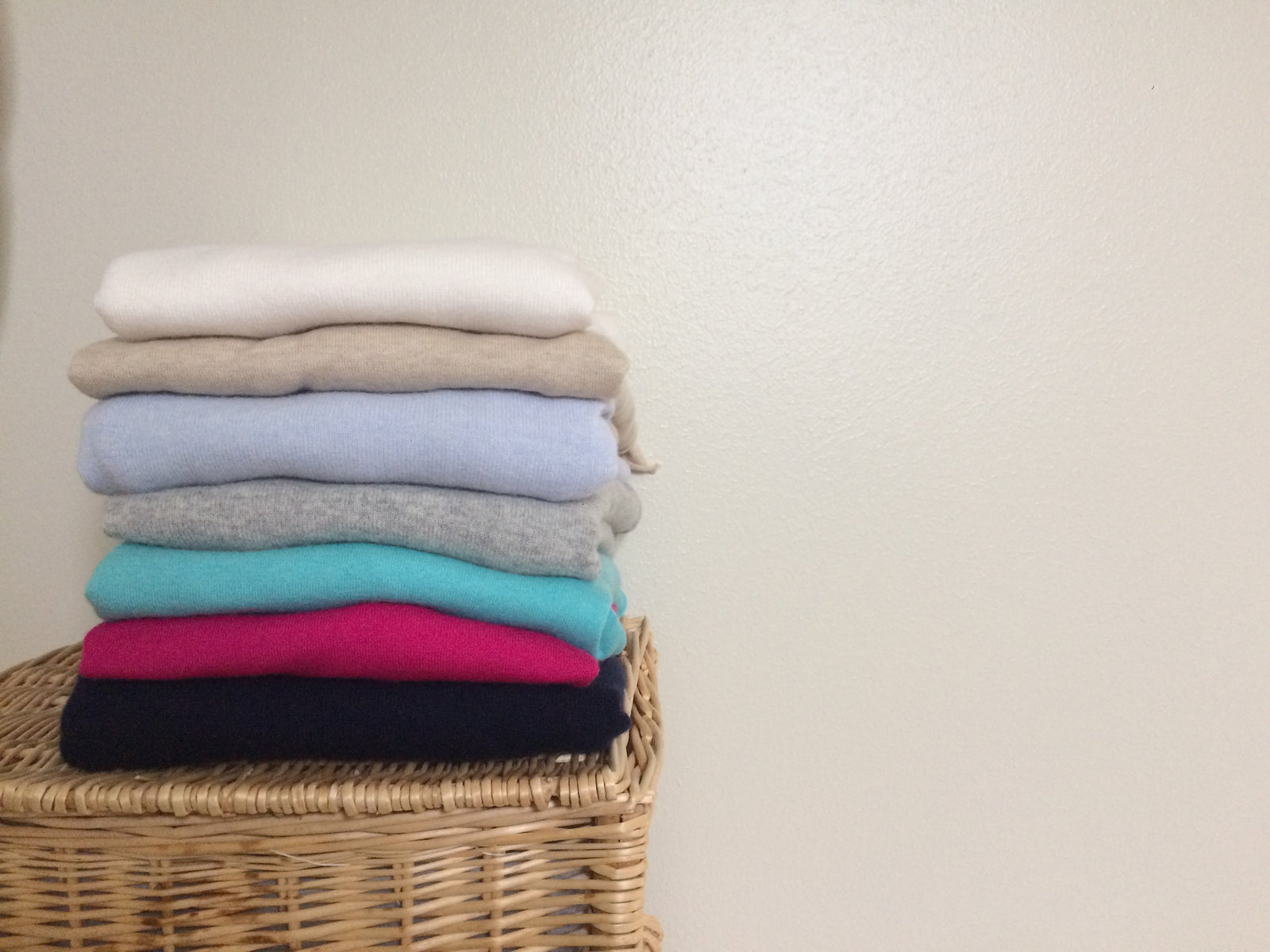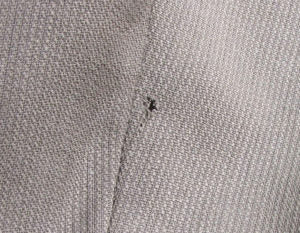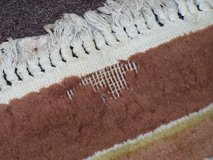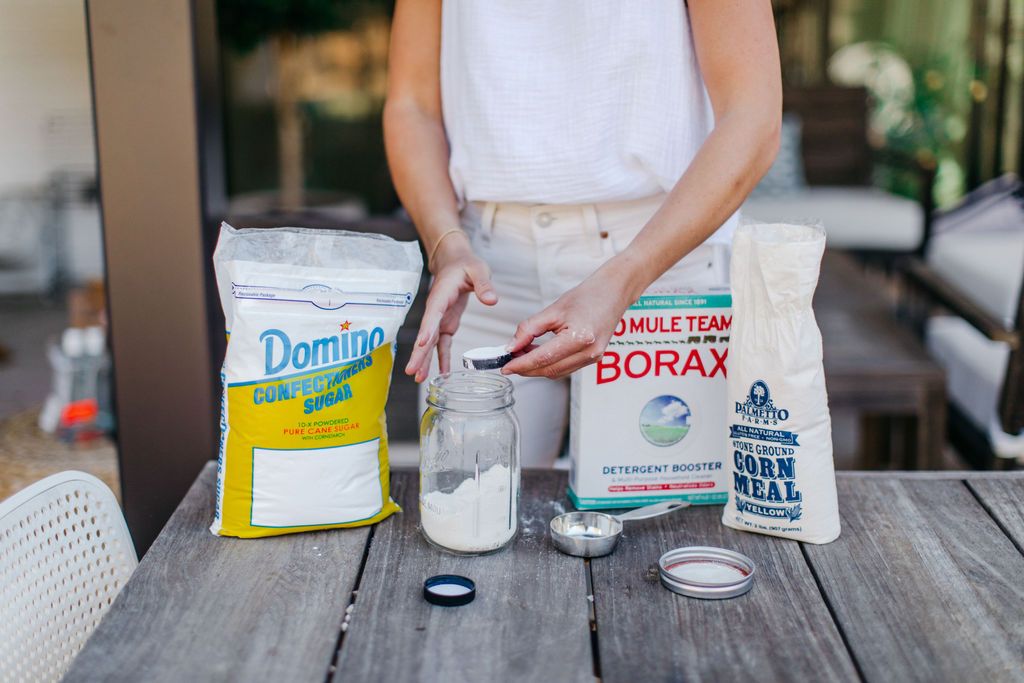How to Get Rid of Moths Without Toxic Mothballs

Figuring out how to deal with pests in the home without the use of harmful pesticides is tough. Considering the season, we thought it most helpful to start with the much-dreaded moths. We hope you’ll enjoy and be able to benefit from this series!
Getting Rid of Moths Without Moth Balls
So you just pulled out your favorite wool sweater for the winter and your heart sinks when you see it’s riddled with holes.
Unfortunately, since clothes moths avoid light and hide in dark places they are capable of infiltrating a home before they’re even noticed. So finding a hole in a garment, the carpet, or furniture is usually what first signals the moth’s presence.
Don’t panic and call an exterminator or run to the well-known moth balls. It’s imperative to avoid toxic pesticide use in the home, and moth balls are made of naphthalene or 1,4-diclorobenzene which are harmful chemicals that can pollute and pervade the entire house. Under California Proposition 65, both naphthalene and 1,4-diclorobenzene are considered carcinogenic and can cause organ damage.
What to do instead? Try these effective tips for avoiding exposure to harmful pesticides and controlling an infestation.
Start With Clean Clothes & A Clean House
Understanding a moth’s life cycle, habits and what they thrive on is key.
The adult moth does not eat clothes. It is the caterpillar or larvae stage that voraciously devours organic fibers derived from animals.
Moth larvae thrive in dark humid places, don’t like to be disturbed and feed on bristles of natural brushes, woolen carpets, piano felts, silk, sheepskin, feathers, pet fur, lint, hair, skin, dust, food stains and sweat found on fabrics, especially those made of wool, silk, cashmere, and animal fur.
They will also eat synthetics or cotton blends if these fabrics contain wool. Basically they love to eat dirty, sweaty clothes and fabrics!
They won’t eat clean fabrics as perspiration, urine, and food stains provide essential moisture and nutrients for their development. In fact, larvae can’t survive on clean fabrics and will die of starvation in about two weeks.
5 Steps to Naturally Eliminate Moths
1. Inspect Your Home for Hidden Infestations
If you find holes in your clothes you know your closet is impacted. You can look for tell-tale signs like holes in fabrics, moth’s wings, patches of silk webbing, excrement and particles of fabric.
To truly eradicate moths, you must make sure that they haven’t invaded other parts of your home.
Check furniture and carpets, behind drapes and other wall hangings, woolen/down bedding, feather pillows and under furniture. You also want to check air registers, air returns and vents, especially if you have pets.
2. Deal With Known Infestations Right Away
Tailors and dry cleaners can restore most affected garments and fabrics. Discard garments, furniture and other items that are damaged beyond repair.
Place all other affected items in tightly sealed plastic bags to be cleaned. Furniture, area rugs, carpets, etc. will have to be dealt with on a case by case basis. Empty closets completely, including synthetics and other natural fibers like cotton, as moth larvae/eggs can be found on other fibers.
This can be overwhelming, so to keep the project manageable, treat one bag at a time. One of the best tricks is to first take the items outside and expose all sides to the sun -- weather permitting! If not, skip to next step.
As moth larvae seek darkness and the sunlight will cause them to drop from the fabric. Try to beat, brush and vigorously shake items outside to remove eggs and larvae, and don’t forget pockets and areas under collars and cuffs.
3. Clean Infested Items Bag By Bag
Dry cleaning is a major weapon in the war against moths and is desirable for delicate woolen and cashmere garments.
After dry cleaning make sure to eliminate synthetic chemical residues from the process by sunning and airing out the garments before bringing them into the home.
Reduce the high cost of dry cleaning by laundering, freezing or heating garments that will not be damaged by the following procedures:
- First treat outside if possible (see above).
- Wash all items that can tolerate 120 degrees for 20-30 minutes and tumble dry in high heat. You can also heat the items in an oven for 30 minutes at 120 degrees. This extreme heat will kill all stages of the moth’s life cycle.
- As with heat, extreme cold kills all stages of the moth life cycle. Freeze items that can’t stand high temperature or cannot be dry cleaned (stuffed animals, feather accessories, feather pillows, duvets, etc.) by placing them in tightly sealed polyethylene bags in the freezer at 0 degrees for at least 72 hours.
- Alternatively if you live in an extremely cold climate, simply place items outside. You can also consider dry ice treatment of clothes, furniture, mattresses stuffed with feathers, etc.
- For furs, clean professionally and consider commercial cold storage.
4. Bring Out The HEPA Vacuum
A HEPA vacuum will suck up all life cycle stages of the moth, including difficult-to-see larvae and eggs.
HEPA vacuuming routinely is indispensable against moths, as it will also get rid of the larvae’s food supply on dirty carpets and materials laden with stains, lint, crumbs, dead insects, pet and human hair.
Thoroughly vacuum the entire house and focus on carpets (including under furniture and perimeter of wall-to-wall carpeting), upholstered furniture, front and back of drapes, window sills, above doors and windows, air registers, return filters, vents, and behind radiators and baseboard heaters.
Moth larvae love pet hair so clean more often if you have pets, especially their bedding!
When vacuuming, make sure you use the crevice attachment to get into cracks and clean the brushes after each use with soapy water.
Always throw away the vacuum bags if an infestation is suspected since it can include eggs, larvae and/or adult moths that could find their way back into your home.
5. Moth-Proof Your Closet -- Do A Deep Clean
If you find infested clothing items, the best thing you can do is a closet deep clean, following the Branch Basics Deep Clean Protocol:
- Remove all the contents of your closet and treat as described above.
- Then HEPA vacuum the ceiling, walls and floor of your closet in that order, paying special attention to corners and where the ceilings, walls and floor meet. Don’t forget the surfaces of built-in shelving, dresser drawers and cabinets.
- Next, wipe down the ceiling, walls, and hard surface floors by preparing two buckets: one for a cleaning solution and one for clean rinse water. The cleaning solution is simply 1 tsp pure soap or 1 tsp Branch Basics per gallon of water. Test a small area to make sure solution doesn’t affect the paint and use a mop to make three passes over each area. The surface will look slightly damp.
- After three passes over an area, rinse the mop in the clean water bucket, squeeze out the water, then dip in the cleaning solution and repeat. Be sure to pass over all surfaces.
- After you have washed ceilings, walls, and floors, use clean cloths or paper towels to do the same process on shelves, trim, and baseboards.
- Refresh clean water bucket as needed.
While this may seem tedious, it is a tried, true and proven successful protocol that many people have used with great success!
Finally, place the cleaned contents of the closet in insect-proof, breathable containers. Storing clothing in heavy plastic garment bags and airtight containers trap moisture, and fabric cannot breathe.
They can also emit gas, causing fabric to turn yellow and deteriorate. A few of our favorite include these 100% cotton garment covers and these polypropylene insect-proof storage bags.
In Conclusion
In conclusion, it’s best to routinely monitor fabrics a couple of times a year for signs of moth damage so you can take action before infestations get out of hand.
Consider including a basic deep clean for your closet in spring before you store your winter clothes away and again in the fall when you bring them out to stop moths before they can do damage. These practices will help protect your unaffected items and save others from getting destroyed if damage has already been done!
For more natural ways to get rid of common household pests, check out:
Categories

Marilee Nelson
Marilee Nelson is an Environmental Toxins expert who has spent nearly 30 years advocating for the chemically-sensitive and chronically-ill. She is a Board Certified Nutritionist, Certified Bau-Biologist and Bau-Biology Inspector and specializes in Food As Medicine. She has helped thousands of families and individuals identify, heal and recover from toxic exposures and is on a mission to revolutionize the way American families view their health.











